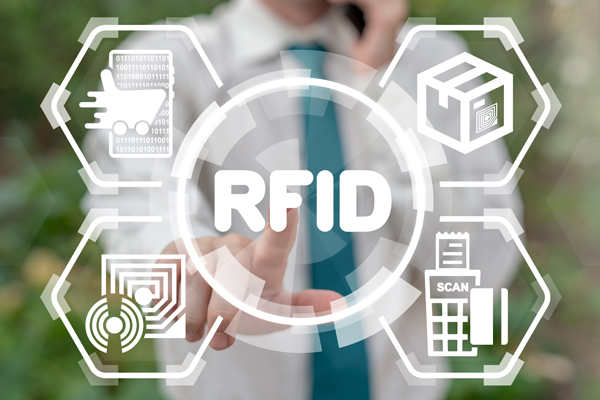© 2024 Boca Holdings South Asia Pte Ltd. All Rights Reserved.
Website by Creative eWorld Pte Ltd.

RFID tags consist of an integrated circuit (IC) attached to an antenna—typically printed or etched conductors on a thin plastic sheet. Data is stored on the IC and transmitted through the antenna. RFID tags are either passive (no battery) or active (self-powered by a battery). Data transmission speed and range depend on the frequency used, antenna size, power output, and interference. Tags can be read-only, read-write, or a combination, in which some data (such as a serial number) is permanently stored, while other memory is left available for later encoding during usage. Information is sent to and read from RFID tags over RF signals. In passive systems, which are the most common, an RFID reader transmits an energy field that ‘wakes up’ the tag and provides power to the chip, enabling it to transmit or store data. Encryption algorithms that ensure security and integrity of the data passing between the tag and reader may protect transmissions.
RFID provides a quick, flexible, and reliable electronic means to detect, identify, track, and hence manage a variety of items. The technology is well-suited for many operations in all types of industries. As RFID technology uses radio waves, smart tickets can be read through dirt, paint, and many non-metallic objects. RFID smart tickets feature anti-collision technology, which lets you scan and identify several objects simultaneously, such as totes of supplies. Applications include ticketing (sports, concerts, ski lifts, etc), warehouse/logistics, airline baggage tracking, returnable plastic containers/pallets, library book/video check-out, sensitive document tracking, supply chain management, anti-counterfeiting, and pharmaceuticals.
Smart tickets refer to thermal tickets with embedded ultra-thin RFID tags. Smart tickets are called ‘smart’ because of the flexible capabilities provided by the RFID tag embedded in the ticket. The tag, in most cases, can be programmed and/or updated in the field, so the same ticket can be reused to serve multiple needs and applications. Hence, the ticket is no longer effectively static as is a bar code ticket, but rather is dynamic in its capability when equipped with RFID.
Passive smart ticket RFID systems overcome the limitations of many existing bar code based automatic data capture systems in that they:
Warning: Static electricity can damage smart tickets. Be sure to ground yourself properly before handling the ticket stock.
BOCA’s smart ticket (RFID) printers enable users to create smart tickets on demand and encode them with variable information. The printers use ticket stock that incorporates blank RFID integrated circuits sandwiched between the face stock and the adhesive layer. Thus, the ICs may be invisible to the human eye. Smart ticket printers function as traditional printers when creating bar codes, graphics, and human-readable text. However, they also have an RFID encoder embedded inside the printer. Before the ticket is printed, the RFID data is encoded on the tag. Following encoding, the ticket is then fed forward for printing. An error message prints over the ticket if the tag does not read or its data does not verify, voiding the ticket for use. A NAK will be sent back to the Host indicating an error encoding the ticket. The reason for the error can be requested with a special status command. It is important to note that the printer will not automatically reprint the ticket. The Host must resend the data in order to reprint the ticket. Therefore, it is recommended that there is bi-directional communication between the Host and Printer. We do not recommend a unidirectional parallel interface on an RFID printer.
The encoding and verification process, which can take milliseconds to seconds depending on the amount of data to be stored in the RFID tag, makes smart ticket throughput somewhat slower than comparable bar code printers. In practice, this slower speed has not been a drawback because smart tickets generally are not used for high-volume, high-throughput applications. The tags used in smart tickets are made from flexible material that does not damage the print head. The integrated circuit may create an uneven surface, which can affect print quality, but this problem is easily avoided by using thicker ticket material or by avoiding printing directly over the IC. BOCA’s smart ticket printers are capable of printing and encoding smart tickets embedded with 13.56 MHz RFID tags in a single pass.
BOCA’s RFID printers currently work with six different RFID reader/encoder modules, the M1, M4, Gemini, SL015, SL032 and RT400. The modules differ in the RFID tag types they support.
ISO 18000-6C/EPC C1 GEN2 – 840-960MHz



